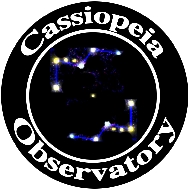NGC2359 Thor's Helmet Nebula
Posted: 25 March 2025
Saturday afternoon and evening, 22 March 2025, I supported Oracle State Park, our local "International Dark Sky Park" at the Tucson Astronomy Festival, hosted by the Tucson Amateur Astronomy Association. We had two tables. Here I am at one of the tables along with Oracle State Park Manager Sinda Sutton. Several TAAA members set up telescopes for solar and night time viewing.
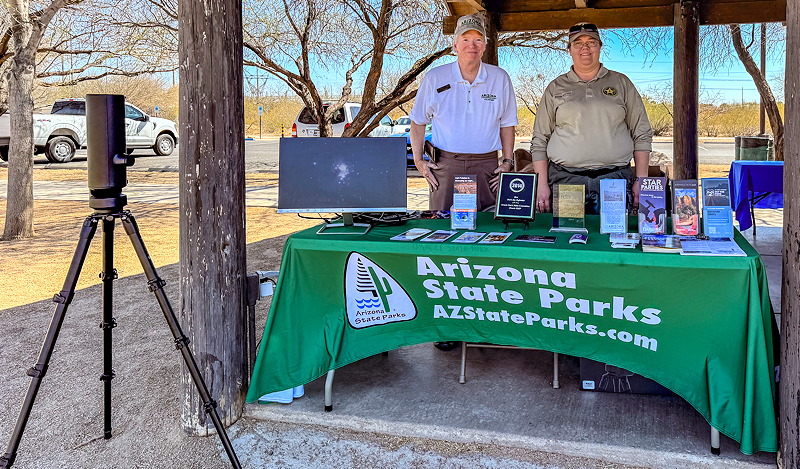
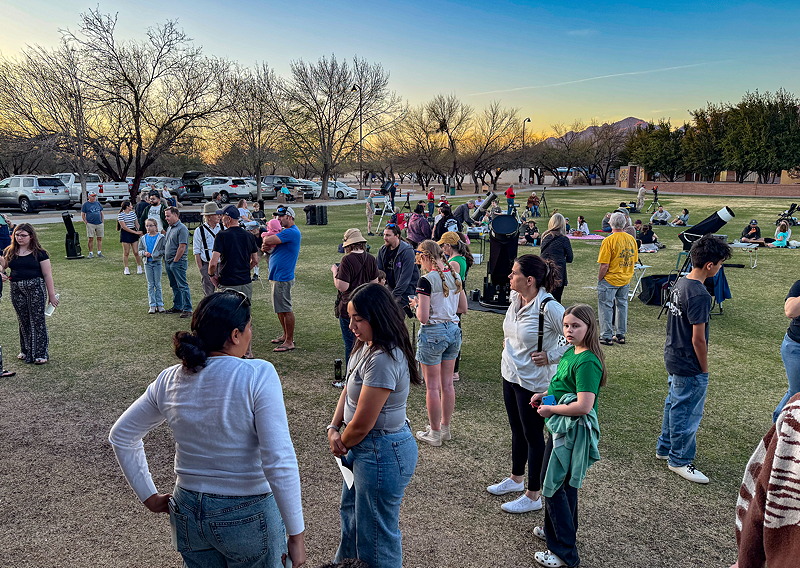
Sunday, 23 March 2025, dawned cloudy. Monday, 24 March, was clear.
|
Open: Monday, 24 March 2025, 1825 MST Temperature: 90°F |
Session: 2084 Conditions: Clear |
Equipment:
12" f/8 LX600 w/StarLock
2" 24mm UWA eyepiece
Focal reducer
Camera:
iPhone 15 Pro Max
D850 DSLR
1831 MST: LX600 ON, StarLock OFF, High Precision OFF.
1836 MST: Viewed Jupiter and three Galilean Moons (Io, Europa, and Ganymede) in the bright sky before sunset, 102X.
1839 MST: Sunset.
1841 MST: The Galilean Moon Callisto was now visible in the bright twilight sky, 102X.
1844 MST: Relaxed on the observatory patio bench.
1913 MST: The planet Mars was visible high overhead near the Zenith in the constellation of Gemini. In the still bright twilight sky, it made a nice triangle with the stars Castor and Pollux in Gemini. I took this handheld iPhone 15 Pro Max photo using the Camera app (Night Mode, 3 seconds, 5X lens).
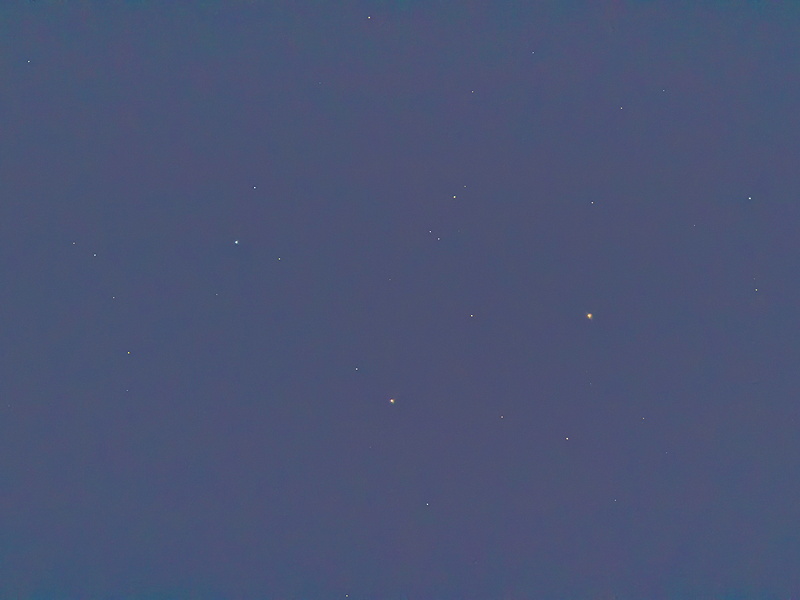
Mouseover or tap on image for labels
1928 MST: Took this handheld iPhone 15 Pro Max photo using the Camera app (Night Mode, 3 seconds, 1X lens) showing the Big Dipper to the right of the observatory dome. The double star Mizar in the handle is visible.
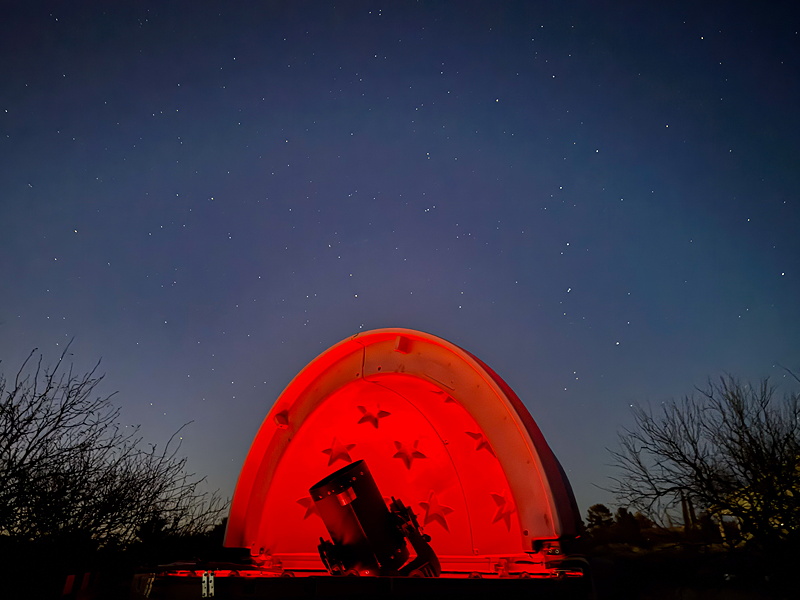
1930 MST: Back inside the observatory. Prepared the D850 DSLR for imaging. Mounted the D850 camera at prime focus + focal reducer, focused on the star Sirius, and locked the telescope mirror.
1941 MST: The Zodiacal Light was visible.
194735 MST: Saw a nice meteor south of the constellation of Canis Major moving east-to-west.
1952 MST: High Precision ON.
Slewed to NGC2359 (Thor's Helmet Nebula).
1954 MST: StarLock ON.
Did two framing test exposures. Autoguiding was not good. I checked the StarLock "Guide Rates". They should have been RA +60%, Dec +21%, but the RA Guide Rate was +20%. That would explain the poor guiding I experienced on all my recent imaging. How the RA setting was changed I don't know. I set it back to +60% and then had good autoguiding.
I then did 15 StarLock autoguided images of NGC2359, 2 minutes, ISO 4000, White Balance 4550K. One image was ruined by a bright satellite. I then did a StarLock autoguided image of 5 minutes, ISO 4000, White Balance 4550K. The top image below is a single 2 minute exposure, the middle image is a stack of 14 2 minutes images for an effective exposure of 28 minutes, and the bottom image is a single 5 minutes exposure.
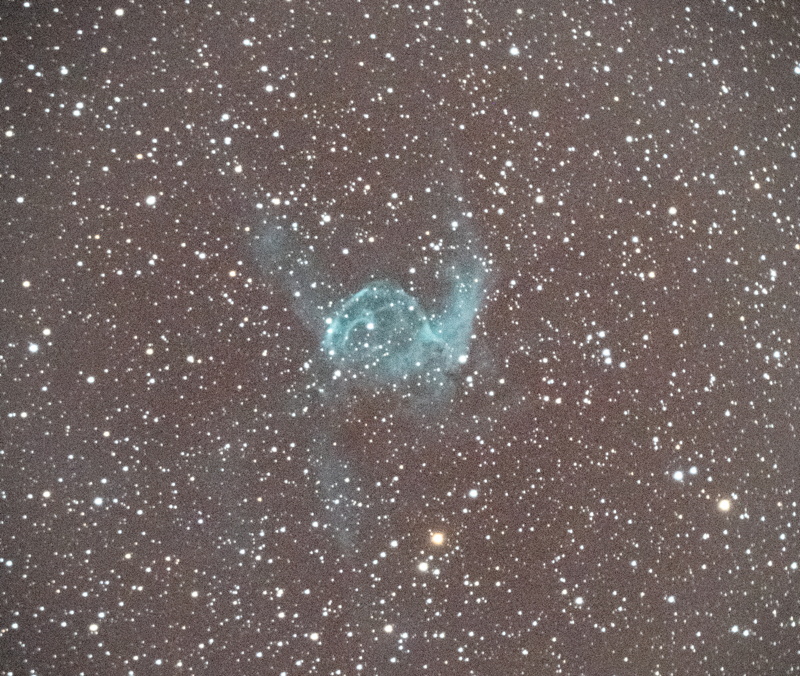
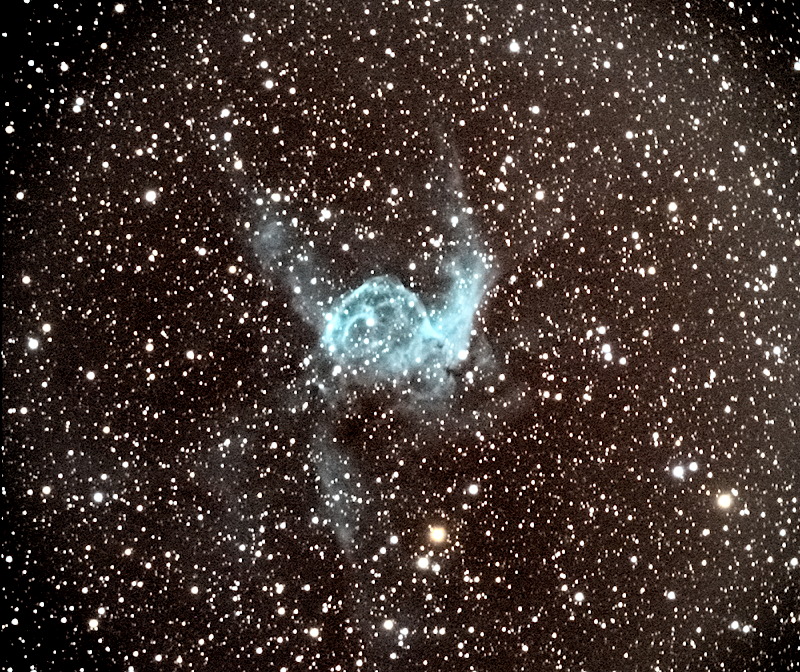
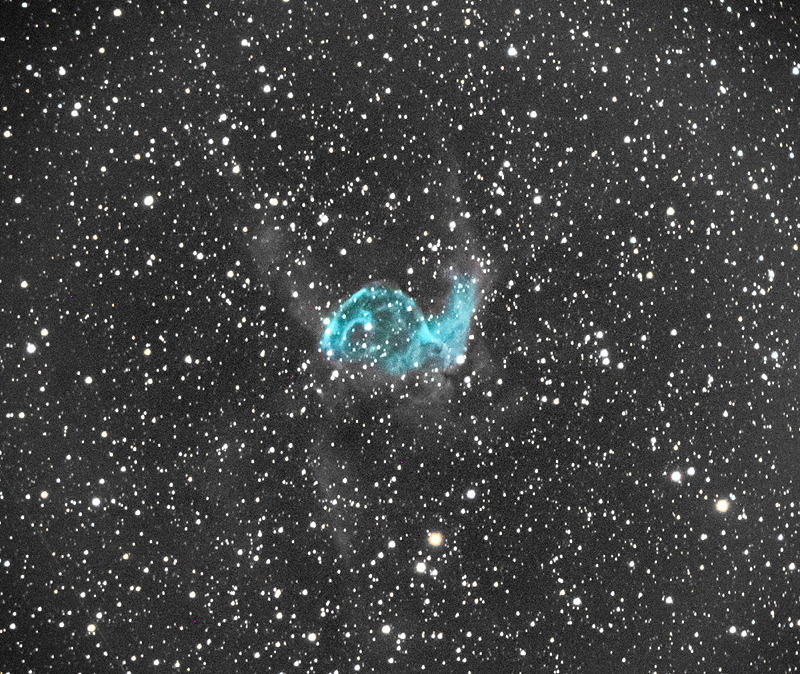
2040 MST: StarLock OFF.
Viewed NGC2359 (Thor's Helmet Nebula), 102X. Some faint nebulosity was visible.
2048 MST: LX600 OFF.
2055 MST: Took a Sky Quality reading and reported the result to Globe at Night.
|
Close: Monday, 24 March 2025, 2100 MST Temperature: 61°F |
Session Length: 2h 35m Conditions: Clear, SQM 20.97 |
Comments are welcome using Email. Please read the Email Etiquette guidance.
Cassiopeia Observatory Home Page
Copyright ©2025 Michael L. Weasner / mweasner@mac.com.
URL = http://www.weasner.com/co/Reports/2025/03/25/index.html
